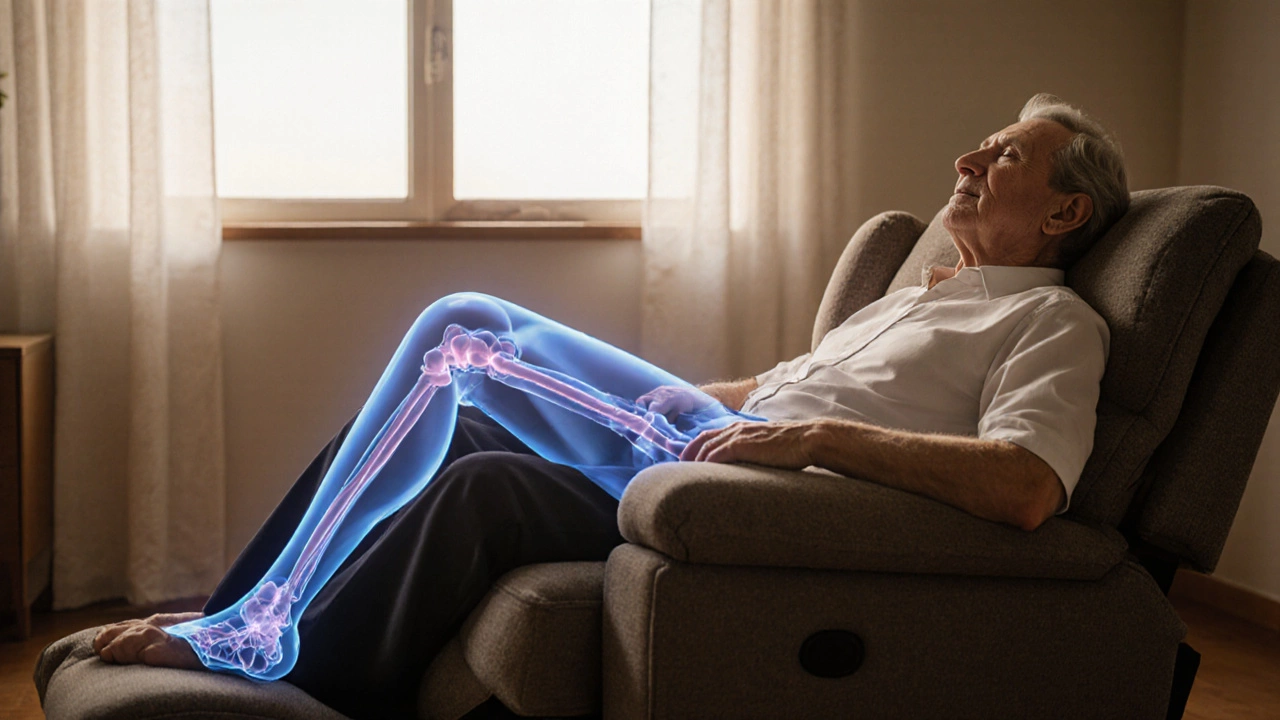
Why Walking After Sitting Feels Hard and How Recliner Chairs Play a Role
Learn why you feel stiff after using a recliner, the body mechanisms involved, and how to pick a chair that keeps you mobile.
When thinking about walking after sitting, the practice of standing up and taking a short walk each time you’ve been seated for a while. Also known as movement break, it helps reset blood flow, reduce stiffness, and keep your mind sharp. Most people don’t realise that a simple walking after sitting habit can counteract the negative effects of long desk sessions.
One of the biggest enablers of this habit is the ergonomic chair, a seat designed to support natural spinal curves and encourage proper posture. When you sit on a chair that promotes good alignment, you’re less likely to feel trapped in a slouch and more inclined to get up for a brief stroll. Ergonomic chairs often feature adjustable height and lumbar support, which means you can fine‑tune the seat to your body and make standing up smoother.
Good posture, the alignment of your spine, hips, and shoulders while sitting or standing is another key piece of the puzzle. Bad posture crowds the circulatory system and makes muscles tense, so when you finally stand, you may feel a sore back or tight neck. By keeping a neutral spine, you reduce those aches and make the transition to walking feel natural. In fact, posture influences how quickly you recover after a break, which is why many workplaces invest in posture‑friendly furniture.
Beyond the chair itself, the concept of active sitting, using furniture that encourages subtle movement while seated adds another layer of benefit. Think balance stools, sit‑stand desks, or chairs with a slight wobble. These pieces keep muscles engaged, so you don’t become completely static. When your body is already primed for motion, a short walk feels easier and you’re less likely to skip the break.
Research from a UK university showed that workers who took a two‑minute walk after every 30 minutes of sitting reported 30% less back pain and higher productivity. The study linked the improvement directly to increased circulation and reduced muscle fatigue. The data supports the idea that walking after sitting isn’t just a feel‑good suggestion—it’s a measurable health boost.
Implementing the habit doesn’t require a full office overhaul. Simple cues, like a timer on your phone or a sticky note on your monitor, can remind you to stand. Pair the cue with a clear path: a nearby hallway or a quick loop around the office. The goal is a consistent rhythm—sit, work, stand, walk, sit again. Over time, your body learns the pattern and the transition becomes automatic.
For teachers and students, the principle works just as well. Classroom desks that are height‑adjustable let kids stand for short bursts, reducing restlessness. A quick walk to the water cooler or a lap around the room can refocus attention and improve concentration for the next lesson. The same idea applies to lecture halls, where a brief stretch before a Q&A session can energize both speaker and audience.
When selecting furniture for home offices or study areas, consider pieces that support both sitting and standing. A sit‑stand desk paired with an ergonomic chair gives you the flexibility to switch positions throughout the day. Adding a floor lamp with a timer can signal when it’s time to switch, reinforcing the walking habit without extra mental effort.
Ultimately, the synergy between movement breaks, short periods of standing or walking interspersed with sitting and supportive furniture creates a healthier routine. You’ll notice less stiffness, clearer thinking, and even better mood. Below, you’ll find practical guides, product comparisons, and expert tips that dive deeper into each of these elements—so you can start building a workspace that keeps you moving and feeling great.

Learn why you feel stiff after using a recliner, the body mechanisms involved, and how to pick a chair that keeps you mobile.